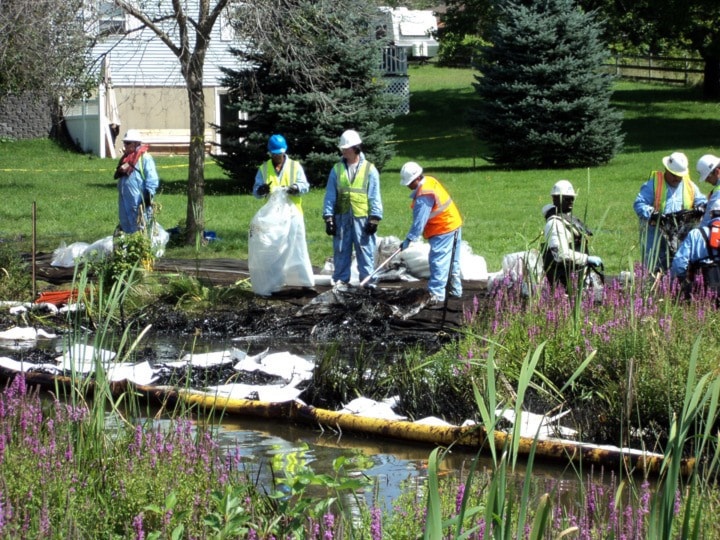Houston councillors asked how quickly Enbridge can respond to oil spills on Tuesday after hearing a company update on the 2010 pipeline rupture that spilled more than 20,000 barrels of oil into Michigan's Kalamazoo River.
Lorraine Little is a senior Enbridge spokesperson who is based in the eastern U.S. and saw the Kalamazoo spill firsthand.
Little was touring several B.C. towns along the route of Enbridge's proposed Northern Gateway pipelines last week, and spoke to municipal councillors in places like Kitimat and Fort St. James.
After hearing her present in Houston on Tuesday, Mayor Bill Holmberg asked, "The response time before you guys honestly felt you had a handle on the spill—how long was that?"
Little said that Enbridge workers were on the scene minutes after they realized they had a leak.
"Literally, it was right down the road from them," she said. "They were able to visually say 'Yep, this is what happened,' and had boom out on the river within 40 minutes.'"
Councillor Rick Lundrigan asked Little how Enbridge first learned it had a leak, and whether it has since upgraded its detection technology.
"We were actually notified of the spill at our control centre—that was the morning of July 26," Little said.
According to preliminary report by the U.S. National Transportation Safety Board, it took 17 hours before Enbridge realized it had a pipeline leak in Michigan.
Although several alarms did go off in its Edmonton control centre when the pipeline broke, the NTSB reports, Enbridge staff didn't recognize those alarms as a leak.
Finally, a worker for another pipeline company saw the spill and called it in on Enbridge's emergency line.
"Line 6B had been shut down the day before," Little explained.
Under normal conditions, she said, control-room staff would have recognized a pressure drop as a leak and shut down the pipeline right away.
Little said Enbridge has since done a review of its pipeline safety protocols, and stepped up safety checks in its older pipelines. Although the NTSB is still investigating the cause of the Michigan pipeline break, the line was over 40 years old.
Little also noted that while Enbridge estimates the entire spill at 843,444 gallons of oil (3.19 million litres), less than half of that actually reached the river system.
"Oftentimes, what you hear in the media is that a million gallons, or whatever, spilled into the Kalamazoo River," Little said.
"The reality is that about 8,000 barrels (1.27 million litres) made it into Talmadge Creek and the Kalamazoo."
Pipeline companies must report spills as all the oil left between two shut-off valves in a line, Little explained, and in the Kalamazoo spill, most of that free oil was vacuumed out of the ruptured pipe and re-injected further down.
The U.S. Environmental Protection Agency, which has led the Kalamazoo clean up operation, reported in April that 1.1 million gallons of oil (4.2 million litres) have been collected at the site so far.
On Thursday, the EPA reopened nearly all of the Kalamazoo River to the public for fishing, swimming and boating.
Although users may still see some tiny flecks or small globules of oil in the water, the EPA said they don't pose any health risk beyond irritated skin.
As a goodwill gesture, Enbridge has turned three of its clean-up access points on the Kalamazoo River into public parks. The parks include cleaning stations where people can get wipes to clean off any remaining oil that might stick to their boats or clothing.
